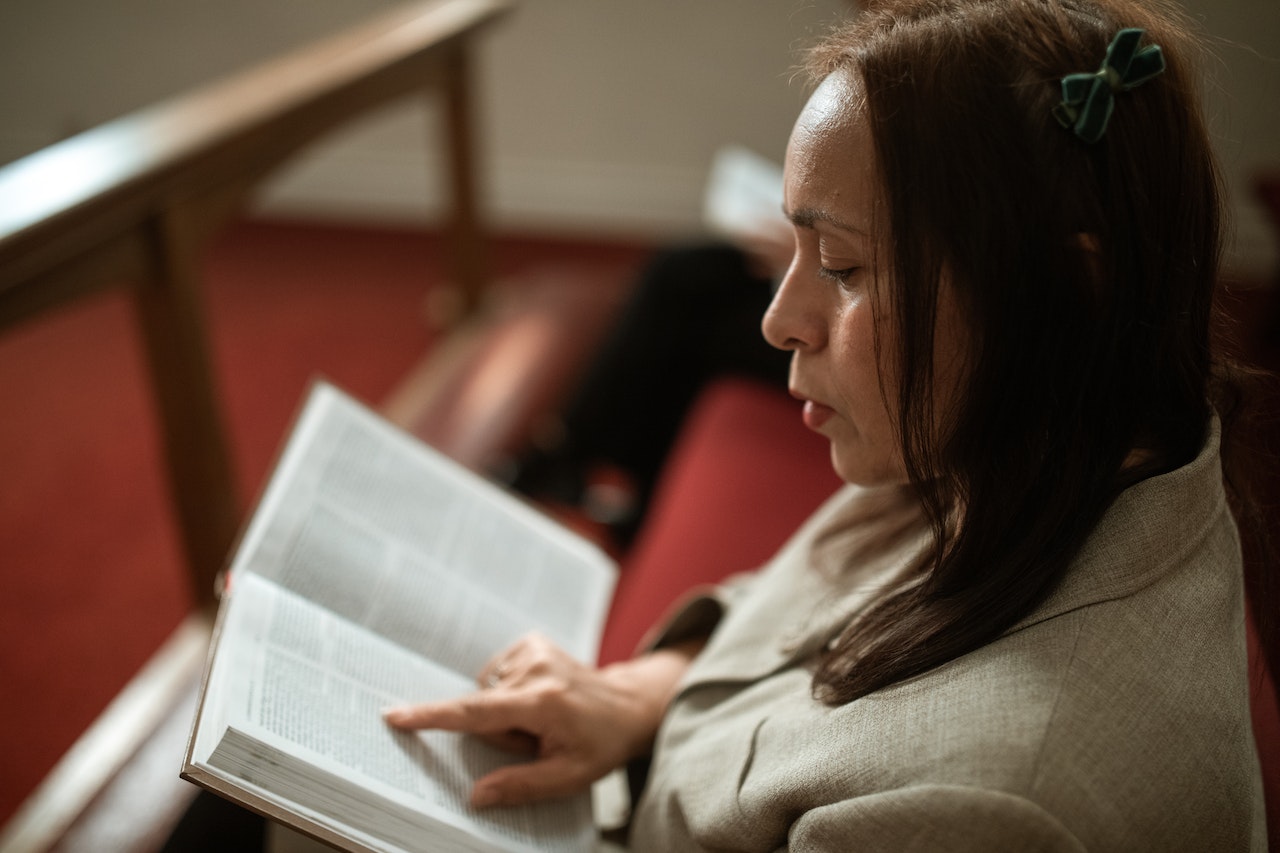Orthodox vs Eastern Orthodox: An Introduction
Orthodox Christianity, also known as Eastern Orthodox Christianity, is one of the three major branches of Christianity, alongside Roman Catholicism and Protestantism. While the terms “Orthodox” and “Eastern Orthodox” are often used interchangeably, it is important to note that there are some distinctions within the Orthodox Christian tradition.
Orthodox Christianity traces its roots back to the early Christian Church, with its origins in the Eastern Roman Empire, particularly in Byzantium (modern-day Istanbul). The term “Orthodox” itself means “correct belief” or “right worship,” emphasizing the adherence to traditional teachings and practices.
Eastern Orthodox Christianity, on the other hand, specifically refers to the branch of Orthodox Christianity that developed in the Eastern part of the Roman Empire. It encompasses various autocephalous (self-governing) churches, including the Greek Orthodox Church, Russian Orthodox Church, Serbian Orthodox Church, and many others.
While all Eastern Orthodox churches share a common faith and liturgical tradition, there are some cultural and theological differences among them. These differences can be seen in various aspects, such as liturgical practices, church architecture, language used in worship, and even certain theological emphases.
Despite these distinctions, Eastern Orthodox Christians share a common belief in the Holy Trinity, the divinity of Jesus Christ, the authority of the Bible, and the importance of sacraments. They also uphold the veneration of saints, the use of icons in worship, and the spiritual significance of monasticism.
In summary, Orthodox Christianity and Eastern Orthodox Christianity are often used interchangeably, but the latter specifically refers to the branch of Orthodoxy that developed in the Eastern part of the Roman Empire. While there are some differences among Eastern Orthodox churches, they all share a common faith and liturgical tradition.
Table of Contents
History and Origins of Orthodox Vs Eastern Orthodox
Orthodox Vs Eastern Orthodox: History and Origins
Hey there! Have you ever wondered about the differences between Orthodox and Eastern Orthodox? Well, let’s dive into the fascinating history and origins of these two branches of Christianity.
To understand the distinctions, we need to go back in time to the early days of Christianity. The Orthodox Church, also known as the Eastern Orthodox Church, traces its roots back to the apostles and the early Christian communities in the Eastern Roman Empire. It emerged as a separate entity from the Western Roman Empire, which eventually became the Roman Catholic Church.
The split between the Orthodox and the Roman Catholic Church, known as the Great Schism, occurred in 1054. This division was not only about theological differences but also political and cultural factors. The Roman Catholic Church, centered in Rome, claimed authority over the entire Christian world, while the Orthodox Church, with its center in Constantinople (modern-day Istanbul), asserted its independence.
The Eastern Orthodox Church, as we know it today, encompasses various national churches, including the Greek Orthodox, Russian Orthodox, and Serbian Orthodox Churches, among others. Each of these churches has its own distinct traditions and practices, but they all share a common faith and are in communion with one another.
On the other hand, when we talk about “Orthodox” without the “Eastern” prefix, we are referring to a broader term that includes not only the Eastern Orthodox Church but also other ancient Christian churches that are not in communion with Rome. These churches are often referred to as Oriental Orthodox Churches and include the Coptic Orthodox Church of Egypt, the Armenian Apostolic Church, and the Ethiopian Orthodox Tewahedo Church, among others.
The Oriental Orthodox Churches have their own unique histories and theological perspectives. They also have their own liturgical traditions and practices that differ from those of the Eastern Orthodox Church. However, like the Eastern Orthodox Church, they share a common belief in the divinity and humanity of Jesus Christ.
It’s important to note that despite the historical and theological differences, there have been efforts towards reconciliation between the Eastern Orthodox and Oriental Orthodox Churches. In recent years, dialogues and discussions have taken place to address the centuries-old divisions and work towards unity.
In conclusion, the history and origins of Orthodox and Eastern Orthodox are intertwined with the early days of Christianity and the Great Schism of 1054. The Eastern Orthodox Church emerged as a separate entity from the Roman Catholic Church, while the broader term “Orthodox” includes both the Eastern Orthodox Church and the Oriental Orthodox Churches. Despite their differences, these branches of Christianity share a common faith in Jesus Christ and have made strides towards unity in recent years. So, next time you hear someone mention Orthodox or Eastern Orthodox, you’ll have a better understanding of their historical background and significance.
Key Beliefs and Doctrines in Orthodox Vs Eastern Orthodox

Orthodox Vs Eastern Orthodox: Key Beliefs and Doctrines
When it comes to Christianity, there are various denominations and branches that have their own unique beliefs and practices. Two such branches are Orthodox and Eastern Orthodox. While they may sound similar, there are some key differences between the two. In this article, we will explore the key beliefs and doctrines that set Orthodox and Eastern Orthodox apart.
One of the main differences between Orthodox and Eastern Orthodox lies in their historical origins. The Orthodox Church traces its roots back to the early Christian church, with its center in Constantinople (modern-day Istanbul). On the other hand, Eastern Orthodox refers specifically to the branch of Orthodoxy that developed in Eastern Europe and Russia. So, while all Eastern Orthodox believers are Orthodox, not all Orthodox believers are Eastern Orthodox.
Another significant difference between Orthodox and Eastern Orthodox lies in their relationship with the Roman Catholic Church. Orthodox Christians do not recognize the authority of the Pope and reject the doctrine of papal infallibility. They believe in the authority of the Bible and the teachings of the early church fathers. Eastern Orthodox, on the other hand, share these beliefs but also have their own distinct traditions and practices.
One of the key beliefs in both Orthodox and Eastern Orthodox is the doctrine of the Holy Trinity. Both branches believe in the Father, Son, and Holy Spirit as three distinct persons who are united in one Godhead. They also believe in the divinity of Jesus Christ and his role as the savior of humanity. However, there are some differences in how these beliefs are expressed and practiced.
In terms of worship, both Orthodox and Eastern Orthodox have a rich liturgical tradition. They emphasize the use of icons, which are religious images used as aids to prayer and meditation. However, Eastern Orthodox places a greater emphasis on the veneration of icons, believing that they are windows into the divine realm. Orthodox, while still valuing icons, may not place as much emphasis on their veneration.
Another key difference lies in the language used during worship. Orthodox services are typically conducted in the local language of the congregation, while Eastern Orthodox services are often conducted in Church Slavonic or Greek. This reflects the historical and cultural differences between the two branches.
When it comes to the sacraments, both Orthodox and Eastern Orthodox recognize seven sacraments, including baptism, Eucharist, and confession. However, there are some differences in how these sacraments are administered and understood. For example, Eastern Orthodox practices infant baptism, while Orthodox may baptize adults who have made a conscious decision to join the faith.
In terms of the hierarchy, both Orthodox and Eastern Orthodox have a similar structure with bishops, priests, and deacons. However, Eastern Orthodox places a greater emphasis on the authority of the Patriarch of Constantinople, who is considered the “first among equals” among the bishops. Orthodox, while still recognizing the importance of the Patriarch, may have a more decentralized structure with greater autonomy for individual bishops.
In conclusion, while Orthodox and Eastern Orthodox share many core beliefs and doctrines, there are some key differences that set them apart. These differences can be seen in their historical origins, relationship with the Roman Catholic Church, worship practices, sacraments, and hierarchy. Understanding these distinctions can help foster a greater appreciation for the diversity within Christianity and the richness of its traditions.
Worship Practices and Liturgical Traditions in Orthodox Vs Eastern Orthodox
Orthodox Vs Eastern Orthodox: Worship Practices and Liturgical Traditions
When it comes to worship practices and liturgical traditions, Orthodox and Eastern Orthodox churches share many similarities, but there are also some distinct differences that set them apart. In this article, we will explore these differences and similarities, giving you a better understanding of these two branches of Christianity.
Both Orthodox and Eastern Orthodox churches place a strong emphasis on liturgy, which is the public worship of God. Liturgy is seen as a communal act, where the entire congregation participates in the worship service. The liturgical traditions in both branches are rich and deeply rooted in history, dating back to the early days of Christianity.
One of the main differences between Orthodox and Eastern Orthodox worship practices lies in the language used during the liturgy. In Orthodox churches, the liturgy is typically conducted in the local language of the congregation. This means that if you attend an Orthodox church in Greece, the liturgy will be in Greek, while in Russia, it will be in Russian. On the other hand, Eastern Orthodox churches predominantly use Church Slavonic, a liturgical language derived from Old Church Slavonic, which was used in the early Slavic translations of the Bible.
Another difference lies in the liturgical music. Orthodox churches have a diverse range of musical styles, with some using traditional chants and others incorporating more contemporary hymns. In contrast, Eastern Orthodox churches have a more uniform approach to liturgical music, with a strong emphasis on traditional chants and hymns. This difference in musical styles adds to the unique atmosphere and experience of worship in each branch.
The use of icons is another significant aspect of worship practices in both branches. Icons are religious images that are venerated and used as aids to prayer and meditation. In Orthodox churches, icons are often placed on the iconostasis, a screen that separates the sanctuary from the nave. Eastern Orthodox churches also have icons, but they are typically more prominent and play a more central role in the worship space. The veneration of icons is an integral part of both branches, fostering a sense of connection with the divine.
Both Orthodox and Eastern Orthodox churches also have a strong sacramental theology, believing in the real presence of Christ in the Eucharist. The Eucharist, also known as Holy Communion, is a central part of the liturgy in both branches. However, there are some differences in the way it is administered. In Orthodox churches, the Eucharist is typically received by the congregation using a spoon, while in Eastern Orthodox churches, it is received by intinction, where the bread is dipped into the wine.
Despite these differences, it is important to note that both branches of Christianity share a common foundation and are united in their belief in the Holy Trinity, the divinity of Christ, and the authority of the Scriptures. The differences in worship practices and liturgical traditions should be seen as a reflection of the diverse cultural and historical contexts in which these branches have developed.
In conclusion, while Orthodox and Eastern Orthodox churches share many similarities in their worship practices and liturgical traditions, there are also some distinct differences that set them apart. The language used during the liturgy, the style of liturgical music, the prominence of icons, and the administration of the Eucharist all contribute to the unique worship experiences in each branch. However, it is important to remember that despite these differences, both branches are united in their common faith and devotion to God.
Cultural and Geographical Differences between Orthodox Vs Eastern Orthodox
Orthodox Vs Eastern Orthodox: Cultural and Geographical Differences
When it comes to religion, there are countless denominations and branches that can sometimes be confusing to differentiate. One such example is the distinction between Orthodox and Eastern Orthodox. While these terms may sound similar, they actually refer to two distinct branches of Christianity. In this article, we will explore the cultural and geographical differences between Orthodox and Eastern Orthodox, shedding light on their unique characteristics.
To begin with, it is important to understand that both Orthodox and Eastern Orthodox are part of the larger Christian faith. However, they have diverged over time due to historical and cultural factors. Orthodox Christianity, also known as Eastern Christianity, encompasses various branches, including Eastern Orthodox, Oriental Orthodox, and the Assyrian Church of the East. On the other hand, Eastern Orthodox refers specifically to the branch of Orthodox Christianity that originated in Eastern Europe and the Byzantine Empire.
One of the key cultural differences between Orthodox and Eastern Orthodox lies in their liturgical practices. Orthodox Christianity, in general, places a strong emphasis on tradition and ritual. This is evident in the elaborate and ornate liturgical services that are conducted in Orthodox churches worldwide. Eastern Orthodox, being a subset of Orthodox Christianity, follows these same liturgical practices but with a distinct regional flavor. The Eastern Orthodox Church, for instance, incorporates elements of Byzantine culture, including Byzantine chant and iconography, into its worship services.
Geographically, Orthodox Christianity is widespread, with adherents found in various parts of the world. It is particularly prevalent in Eastern Europe, the Balkans, and the Middle East. Eastern Orthodox, as the name suggests, is primarily concentrated in Eastern Europe, including countries such as Russia, Ukraine, Greece, and Romania. These regions have historically been influenced by the Byzantine Empire and have developed their own unique traditions and customs within the Eastern Orthodox branch.
Another cultural difference between Orthodox and Eastern Orthodox can be observed in their ecclesiastical structures. Orthodox Christianity, as a whole, is characterized by a decentralized structure, with each branch having its own hierarchy and leadership. Eastern Orthodox, being a subset of Orthodox Christianity, follows a similar structure but with specific regional variations. For example, the Russian Orthodox Church has its own patriarch, while the Greek Orthodox Church is led by the Ecumenical Patriarch of Constantinople.
Furthermore, the relationship between Orthodox and Eastern Orthodox with the Roman Catholic Church is worth mentioning. While both branches share common roots in early Christianity, they have been divided since the Great Schism of 1054. Orthodox Christianity, including Eastern Orthodox, does not recognize the authority of the Pope and has its own distinct theological and doctrinal beliefs. This separation has contributed to the development of unique cultural and geographical characteristics within each branch.
In conclusion, Orthodox and Eastern Orthodox are two distinct branches of Christianity that differ in terms of culture and geography. Orthodox Christianity encompasses various branches, while Eastern Orthodox specifically refers to the branch that originated in Eastern Europe and the Byzantine Empire. The cultural differences can be seen in their liturgical practices, incorporation of regional traditions, and ecclesiastical structures. Geographically, Eastern Orthodox is concentrated in Eastern Europe, while Orthodox Christianity is more widespread. Understanding these differences helps to appreciate the rich diversity within the Christian faith and fosters a deeper understanding of the various denominations that exist today.
Conclusion
In conclusion, the terms “Orthodox” and “Eastern Orthodox” are often used interchangeably to refer to the same branch of Christianity. Both terms describe the Eastern Christian churches that trace their origins back to the early Christian communities in the Eastern Roman Empire. These churches share common beliefs, practices, and traditions, while also having some regional variations. Overall, Orthodox and Eastern Orthodox are two different ways of referring to the same religious tradition.
For licensing reasons, we must provide the following notice: This content was created in part with the help of an AI.


